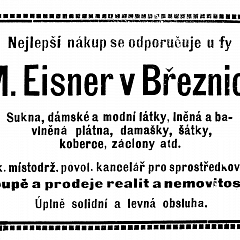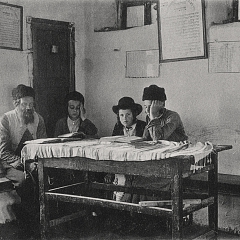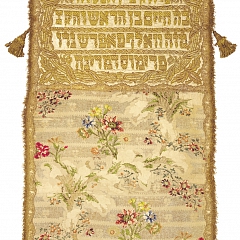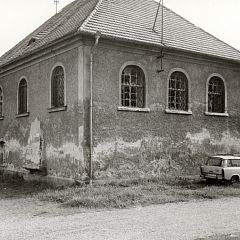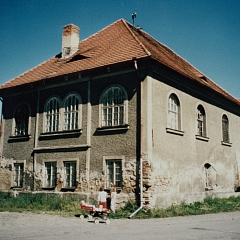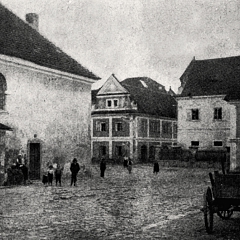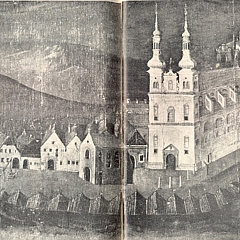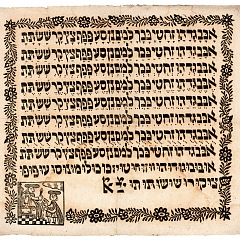
-
Březnice
Jews in Březnice
The earliest written records of Jewish settlement date from the second half of the 15th century. In the 15th–17th centuries, Březnice’s Jews lived in various parts of town, and in 1573–1725 they owned a total of 19 different houses at various times. On the basis of the Translocation Decree of 1726, Březnice’s Jews were forcibly concentrated within the newly established Lokšany suburb. The houses of this new Jewish quarter were built in 1726–1747 on a regular town plan with two squares and two streets. The neighborhood consists of 24 baroque buildings, meticulously numbered using the Roman numerals. A synagogue was built at the center of the larger, rear, square; the smaller square was connected to the main town square by a narrow street and gate. It was a closed ghetto, connected with the rest of town by just the one street and gate. Most of the ghetto’s buildings were renovated in the neo-classical or Empire style following the great fire of 14 April 1821. The priceless Jewish cemetery with baroque gravestones was founded in the mid-16th century, and the oldest surviving gravestones date from the late 17th century. By the early 17th century, a Jewish school (yeshiva) had been established here. From 1720 until the late 19th century, Březnice was the rabbinical seat for the Prácheň region. The town is the birthplace of the important Prague businessman and financier Joachim von Popper (1720–1795), one of the first Jews to be raised into the nobility. In 1942, the local Jews were deported to Klatovy and then to Terezín. In 1942–1945, 201 Jewish citizens of Březnice died at the Terezín ghetto and in Auschwitz. After the war, only two survivors returned and the local Jewish community was not renewed.
